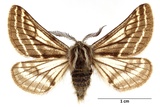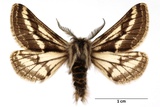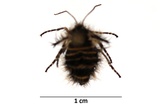Lycia zonaria (Denis & Schiffermüller, 1775) Species
Last modified: May 7, 2024, 10:48 a.m.
A very rare, very local en rapidly declining species in Belgium.
Hitherto known only from LX, where the species was found again in 2018 after a long period of absence.
The species is heavily endangered due to the disappearance of most nutrient-poor meadows through agricultural intensification and increasing eutrophication of the remaining grasslands.
This species is considered Regionally Extinct according to the IUCN Red List category for Flanders 2023.
Details
- Classification
- Family: Geometridae > Subfamily: Ennominae > Tribus: Bistonini > Genus: Lycia > Species: Lycia zonaria
- Vernacular names
- Rouwrandspanner (NL), Belted Beauty (EN), La Phalène zonée (FR), Trockenrasen-Dickleibspanner (DE)
- First mention in Belgium
- Lambillion L.-J. 1912. Varia. — Revue mensuelle de la Société entomologique namuroise 12: 31–32, 40, 51–52, 68, 83–84, 96. On page 51 (as Biston zonaria Schiff.). view page
- Status
-
Native
Distribution
Bionomics
The moths overwinter almost fully developed in the pupa and emerge from late February to April. The males fly late at night and early in the morning, they come to light.
Flight periods
The males fly very early in the year from late March till April, with most observations around 10 April.
Observed on
- Host plant (species):
- Salix repens and Rosa pimpinellifolia
- Substrates:
- Herbaceous plants
The larvae feed on herbs like Onobrychis, Centaurea or Lotus.
Habitat
It inhabits nutrient-poor grasslands, limestone slopes, more dry and still extensively managed agricultural meadows and similar nutrient-poor, dry spots.



